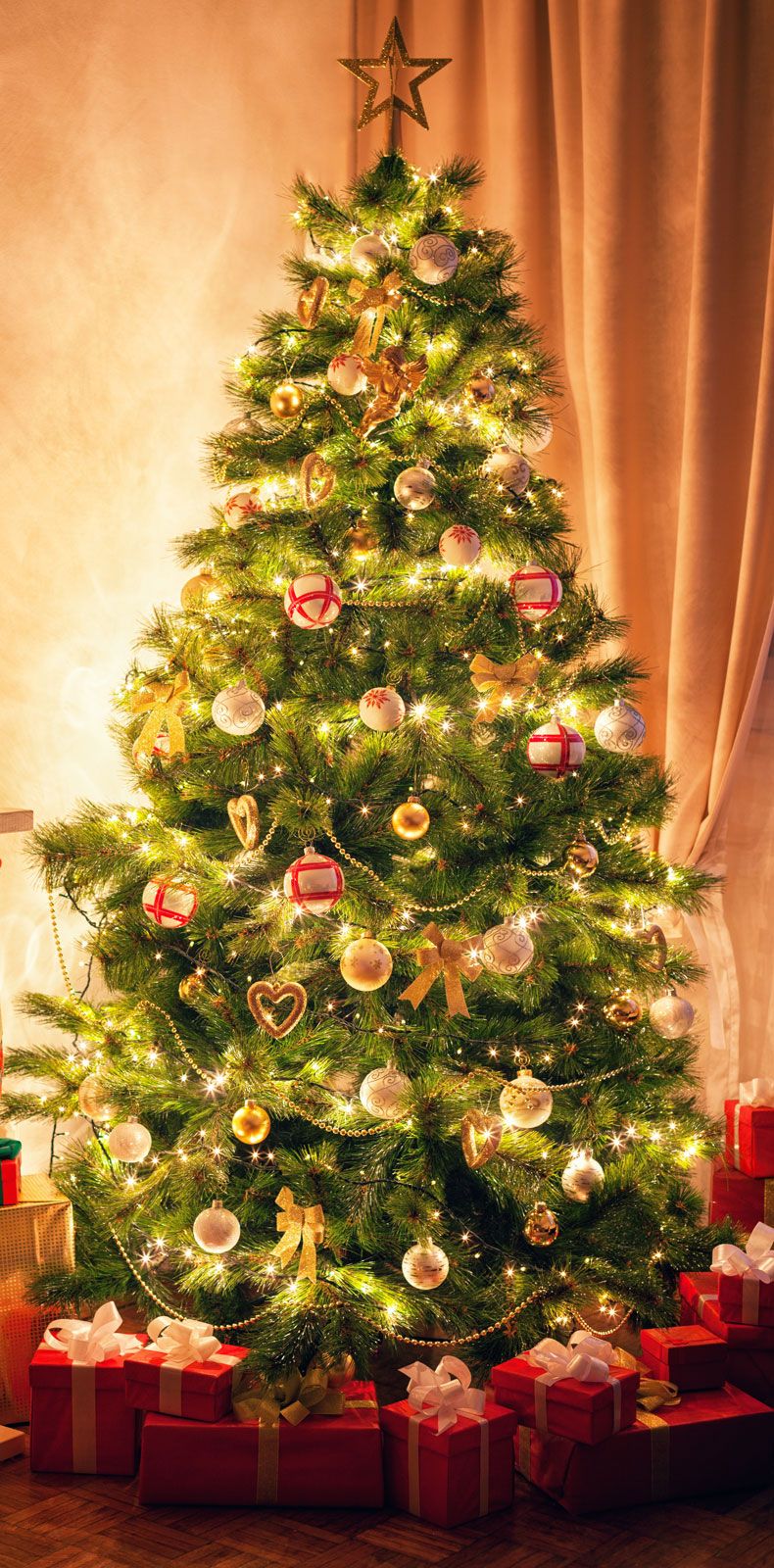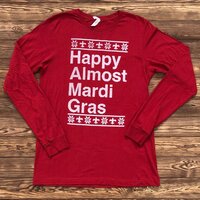I say nothing. I'm someone who observes neither the religious or secular celebration.
You are using an out of date browser. It may not display this or other websites correctly.
You should upgrade or use an alternative browser.
You should upgrade or use an alternative browser.
Saying, "Merry Christmas."
- Thread starter Captain Pre-Capsize
- Start date
- Status
- Not open for further replies.
If you happen to enjoy smoking a P
the fiction gets even worse. Did L Ron Hubbard write that?
The editors of the Encyclopaedia Britannica did:

Christmas tree | Tradition, History, Decorations, Symbolism, & Facts
Christmas tree, live or artificial evergreen tree decorated with lights and ornaments as a part of Christmas festivities. While Christmas trees are traditionally associated with Christian symbolism, their modern use is largely secular. Learn more about Christmas trees, including their history.
The reference to the fir tree sprouting on the stump of an oak dedicated to Odin also came from an Encyclopaedia Britannica article, this one from the days it was in print. If you want to find more about it, look into the story of St. Boniface.
The use of holly and ivy should be familiar to anyone who's so much as heard the song The Holly and the Ivy. The use of evergreens during the winter solstice is found in enough sources that folks think the Christmas Tree came from that, which makes the Paradise Tree a bit of a surprise.
The use of mistletoe as a ward against witches crops up in various places. I didn't cite a hazily remembered Northern Europe legend about it involving Baldur and mistletoe because, well, it's hazy.
Would have thought the yule log was better known than the Stuckey's Pecan Log these days. My introduction was in an article on Christmas customs. Wikipedia has an article, but I'm dubious about citing from them.
Breaking Up Christmas I know from exactly one source. You can find mention online, but I don't think you'll find the bit about the log and black gum. That stands out in my mind because I first thought "Yule log" when I heard it.
The research into this is almost trivial, and quite easy to do.
Mistletoe <snip> ...some hung it over their doors to keep away witches.
It doesn't work... I've tried it, but my mother-in-law still comes to visit.
You’re welcome and thanks for your posts. I have learned much from them.Perfect!
And may the Blessings of the Season be with you and your Family.
Thank you.
Blessings to you and your family in this season and the seasons to come.
Thank you very much.You’re welcome and thanks for your posts. I have learned much from them.
Blessings to you and your family in this season and the seasons to come.
"Yule Tree" works. It both sounds festive and acknowledges the pagan roots of the custom. ;-)
Surprisingly, it seems to come from the Paradise Tree. That was a small tree put up on the Feast of Adam and Eve, which fell on December 24. It was hung with apples to symbolize the fruit...
It's no surprise at all, really. The Paradise Tree was a feature of one of the medieval mystery plays that used the symbolism you described to connect, in the minds of the illiterate laity, the story of the fall of Adam to the story of redemption through the birth of the "second Adam" -- Jesus Christ.
Now, could the tree itself have been included in the mystery play for the very purpose of displacing/co-opting abundant pagan tree-related customs of which the yule log is but one example? Who knows. Scholars and dilettantes will forever debate these kinds of questions. But the debate itself underscores the fact that the ancient and even medieval worlds in which these customs originated were more complex and pluralistic than many people today realize.
All that said, Merry Christmas! (Now bring me the wassail and figgy pudding while I warm myself by your yule log or I'll bedevil you with carols till Stephenmas!)
If you had mentioned the yule tree to the Germanic, they might have thought you meant the yule log, something a bit different.
Or they might have thought I was referring to the Yule tree they had propped up inside their house:
Tree worship was common among the pagan Europeans and survived their conversion to Christianity in the Scandinavian customs of decorating the house and barn with evergreens at the New Year to scare away the Devil and of setting up a tree for the birds during Christmastime. It survived further in the custom, also observed in Germany, of placing a Yule tree at an entrance or inside the house during the midwinter holidays.
(Also from Britannica, emphasis added) Christmas tree | Tradition, History, & Facts - https://www.britannica.com/plant/Christmas-tree#ref106886
Jauchzet Frohlauchet!
Merry Christmas , from BILLSKI!!!
Merry Christmas Mr BILLSKI !
Merry Christmas BILLSKI!!!Merry Christmas , from BILLSKI!!!
BILLSKY.Merry Christmas , from BILLSKI!!!
 Merry Christmas!
Merry Christmas!Or they might have thought I was referring to the Yule tree they had propped up inside their house:
Tree worship was common among the pagan Europeans and survived their conversion to Christianity in the Scandinavian customs of decorating the house and barn with evergreens at the New Year to scare away the Devil and of setting up a tree for the birds during Christmastime. It survived further in the custom, also observed in Germany, of placing a Yule tree at an entrance or inside the house during the midwinter holidays.
(Also from Britannica, emphasis added) Christmas tree | Tradition, History, & Facts - https://www.britannica.com/plant/Christmas-tree#ref106886
Was looking through a reference today that I read to research Medieval Christmas /Scandinavian solstice traditions. One of the earliest references, if not the earliest, of the tree outside the house is from about the middle Medieval period, maybe on the late Medieval side of things. That doesn't mean it didn't exist before that, only that was A) the first time someone thought to note it or B) the earliest reference to survive.
The greenery goes way back. Found a reference to a member of clergy criticizing decorating with greenery and lights. His name was Tertullian, and he lived from the 2nd to 3rd Century. The mention of lights is interesting, given the era. Tertullian's criticism stemmed from it being a pagan practice.
Was looking through a reference today that I read to research Medieval Christmas /Scandinavian solstice traditions. One of the earliest references, if not the earliest, of the tree outside the house is from about the middle Medieval period, maybe on the late Medieval side of things. That doesn't mean it didn't exist before that, only that was A) the first time someone thought to note it or B) the earliest reference to survive.
The greenery goes way back. Found a reference to a member of clergy criticizing decorating with greenery and lights. His name was Tertullian, and he lived from the 2nd to 3rd Century. The mention of lights is interesting, given the era. Tertullian's criticism stemmed from it being a pagan practice.
Since you are interested in trees, I suggest looking at Asherah poles. It was a popular form of idolatry with the early Children of Israel because if you went to a service, you got to have sex with the priestesses. Moses even married a Midianite priestess. It's unclear whether she was a temple prostitute. It would probably bother some people that she was black.
Thanks everyone! See you next year!
- Status
- Not open for further replies.
Similar threads
- Replies
- 3
- Views
- 924
- Replies
- 52
- Views
- 4K
- Replies
- 19
- Views
- 2K
- Replies
- 44
- Views
- 4K








